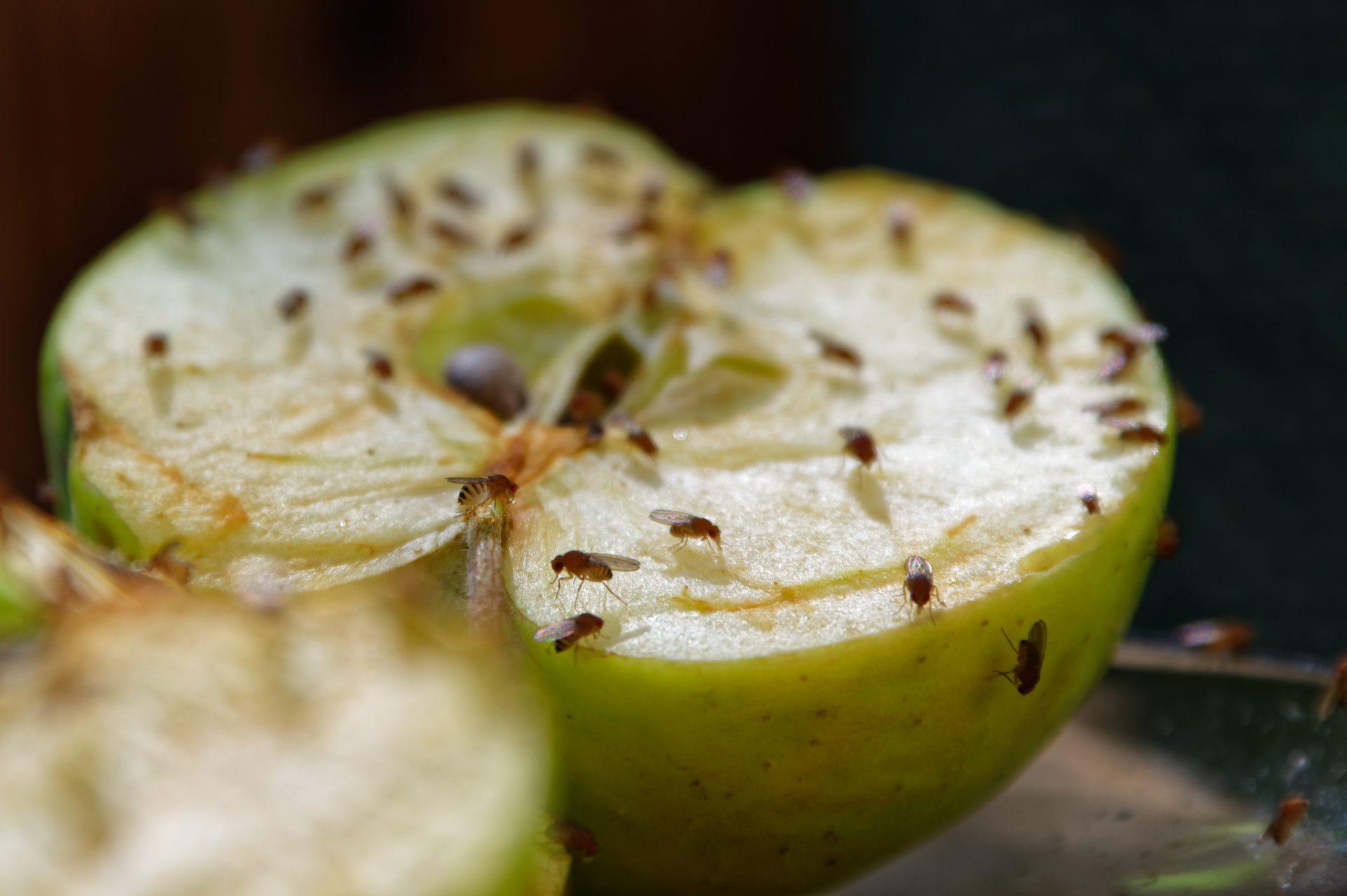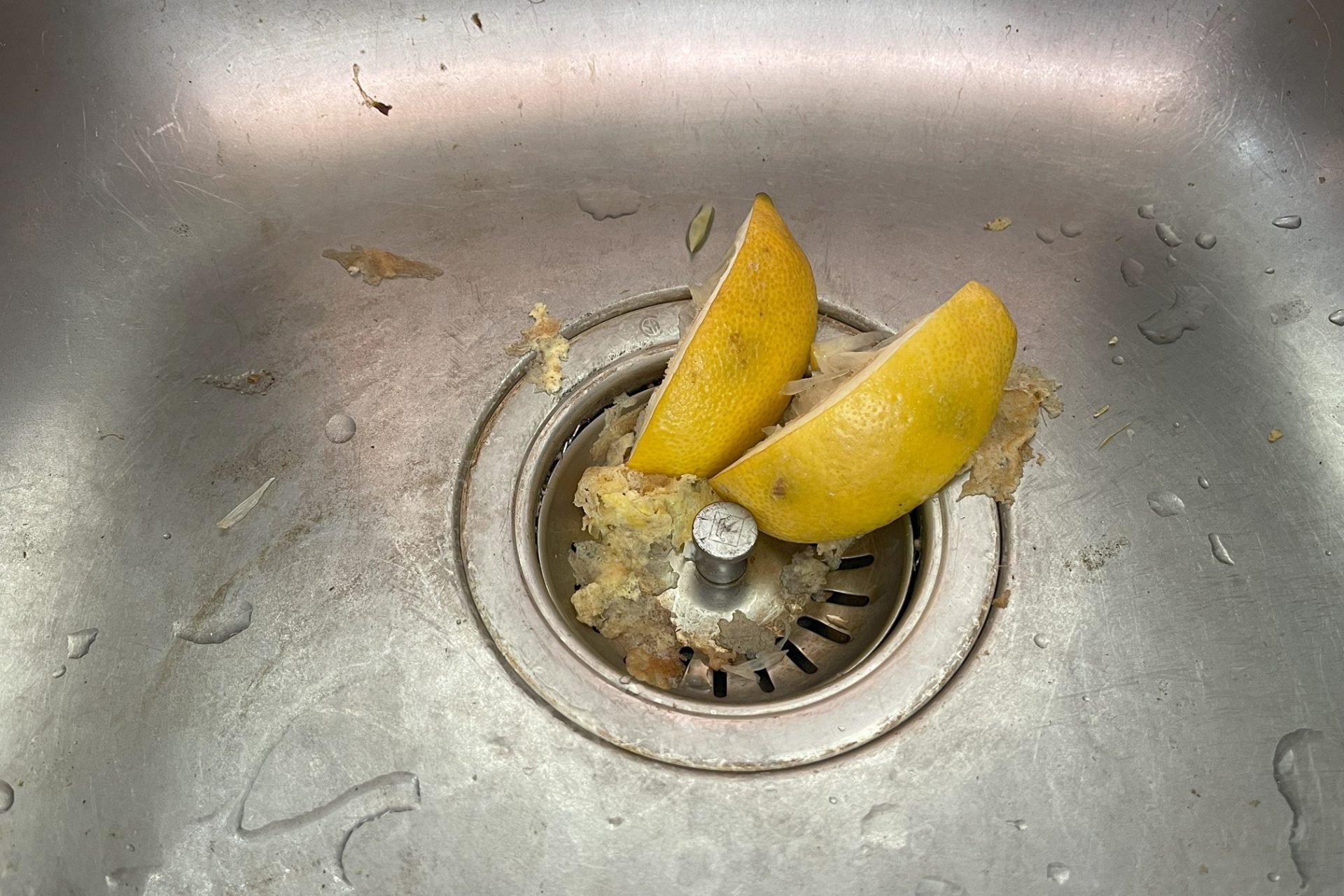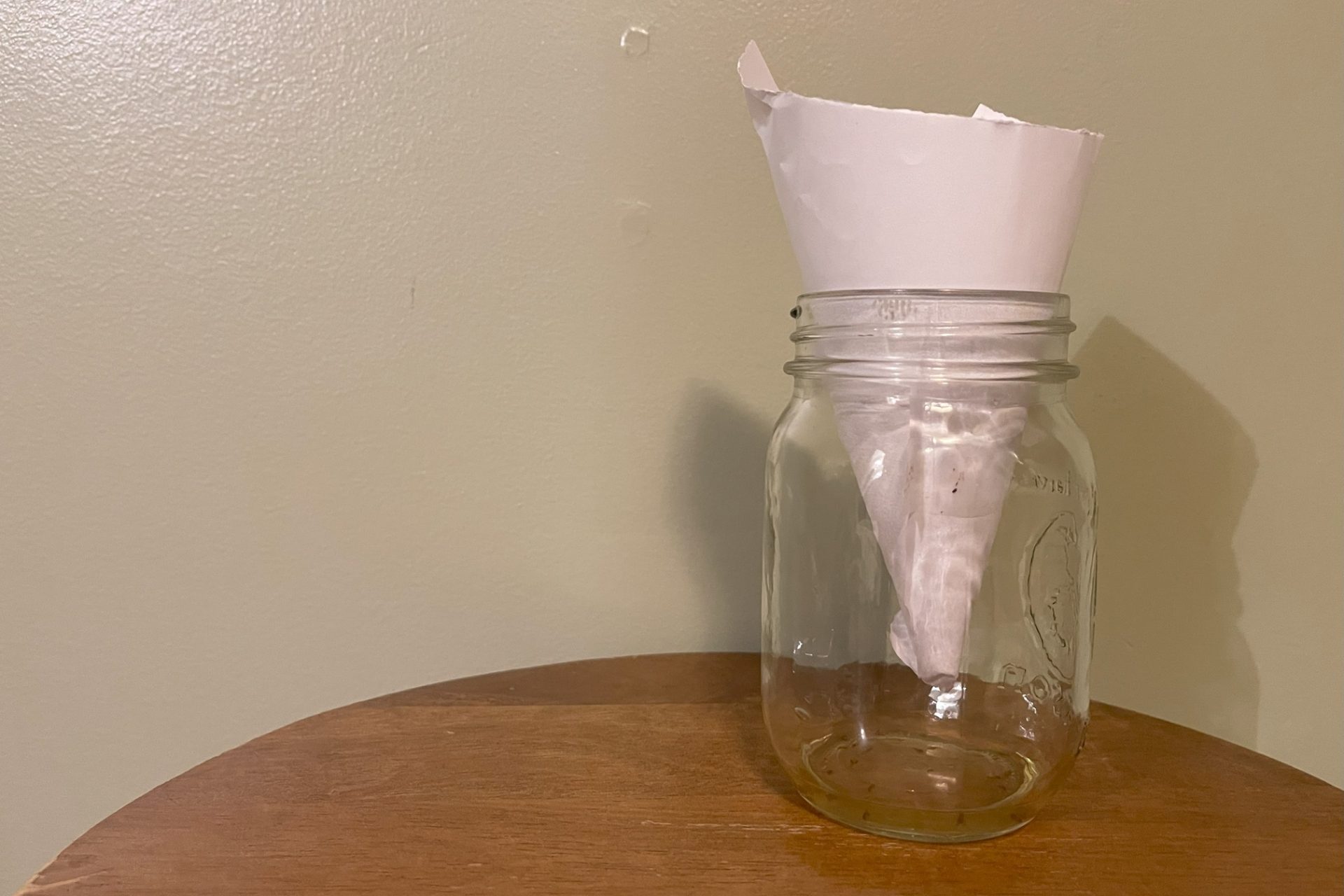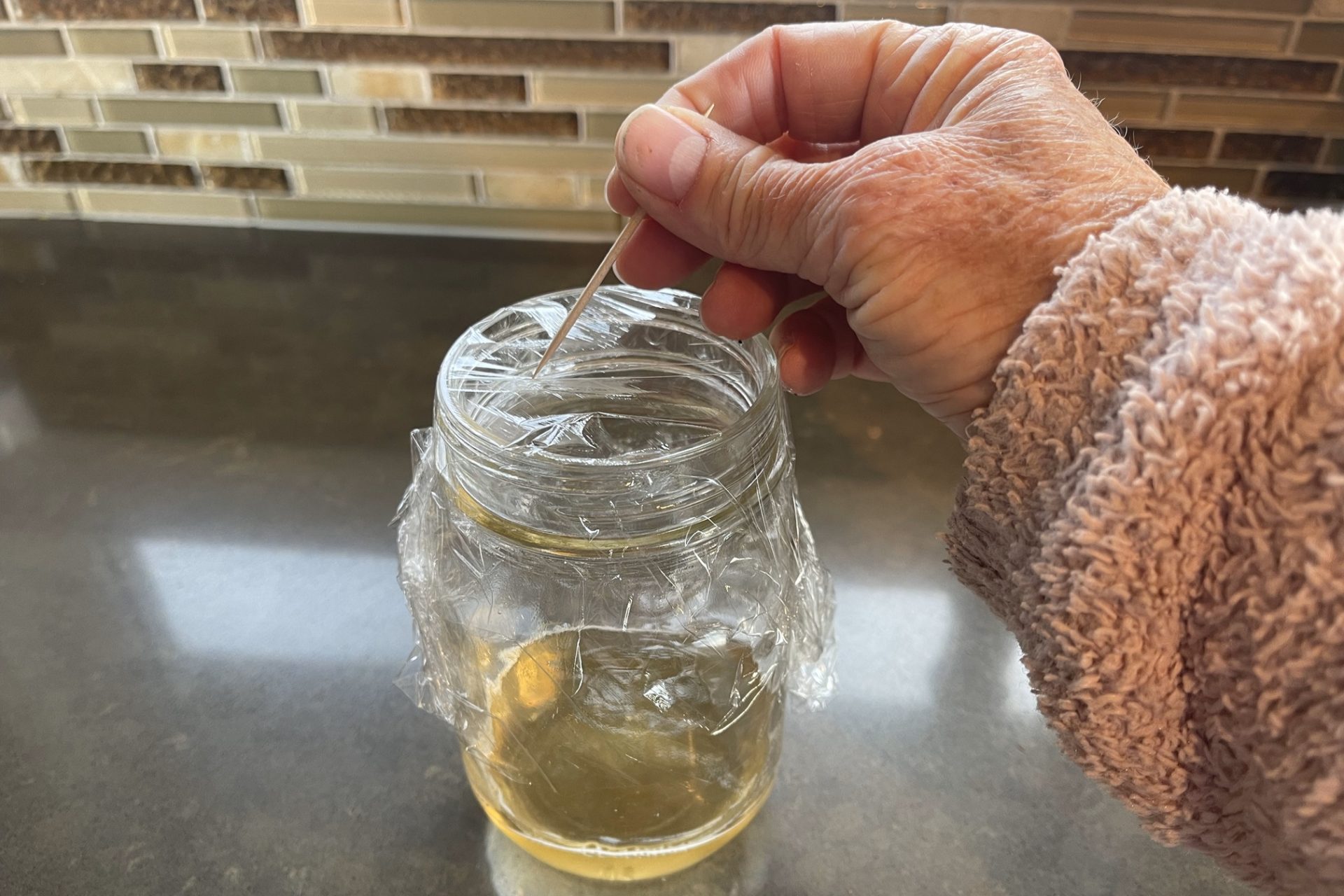Fruit flies are pesky any time of the the year, but they are particularly active (and annoying) in late summer and early fall because of the abundance of fresh garden produce. If you have fruit flies in your home, read this blog for some tips on how to get rid of fruit flies!
Let’s talk about the life cycle of fruit flies; and then I’ll share some tips on how to reduce common breeding grounds and my go-to method to eliminate them when they get too prolific.
The Life Cycle of Fruit Flies

Fruit flies are tiny, 2-winged flies that measure about 3 mm (1/8”) long. Their front end is usually brown, their back end is black, and they have reddish eyes.
Fruit flies reproduce rapidly for 2 reasons:
- Their life cycle from egg to mature adult only takes about 7 days.
- They can lay up to 500 microscopic eggs at one time.
Fruit flies are particularly fond of starchy, sweet fruits and vegetables like tomatoes, squash, bananas, potatoes, and onions, which are typically stored unrefrigerated.
Fruit flies lay their eggs in the top layers of very ripe or rotting fruit.
They also lay eggs in water drains, garbage bins, garburators, mops, and moist rags with rotting organic substances contained in them.
Fruit flies make their way indoors several ways, as they hitch a ride to the kitchen on produce, fly in through open doors, or squeeze through small cracks in window screens or seals.
How Dangerous are Fruit Flies?
For the most part, fruit flies are harmless kitchen pests, but they can carry detrimental bacteria and other pathological organisms which they may leave behind to contaminate food, so it is best to prevent fruit fly proliferation and employ methods to get rid of them.
Be sure to wash all containers that have had fruit flies in them in hot, soapy water before using them again. Better yet, if you have access, run those dishes through a dishwasher. Dishwashers often use hotter water than our hands can tolerate and can do an excellent job cleaning dishes that have had fruit flies in them.
How to Prevent Fruit Flies

Preventing a problem in the first place often simpler than the cure, so the first strategy in containing fruit fly populations is to get rid of sources that attract fruit flies and to eliminate their breeding sites.
Here is a list of potential breeding locations and what you can do about them:
- Store any fruits or vegetables with damaged skin and unused portions of fruit and vegetables in the refrigerator.
- Clean up spills quickly. Liquids, including water, that seep under cupboards or fridges are prime real estate for fruit fly population advancement.
- Rinse out juice and milk containers with water before recycling.
- Clear out recycle bins regularly and check for fruit fly growth.
- Wipe out recycle bins and trash cans with warm, soapy water monthly during the gardening season.
How to Eliminate Fruit Flies with a Fruit Fly Trap

A fruit fly trap is a simple, effective, and chemical-free way to get control of a flourishing fruit fly population.
The fruit fly trap setup is straightforward and uncomplicated:
1. Pour a little apple cider vinegar into a mason jar or cup.
I pour about 2.5 cm (1″) of apple cider vinegar in to the vessel.
Fruit flies are attracted to the sweetness of the apple cider vinegar and I prefer to use a glass container so I can monitor my progress.
2. Add a drop or two of liquid dish soap & swirl it around a bit to reduce the surface tension.
I’ve done this with or without the dish soap, and it works well either way.
3. Make a wide-mouth paper cone and place it in the jar so the tip end is above the vinegar and the edges seal off the jar or cup.
As the fruit flies are attracted to the sweetness of the apple cider vinegar, they fly down the cone, can’t get back out, and eventually drown.

Alternatively, you could create this fruit fly trap using the same ingredients, but instead, cover the dish with plastic wrap and poke a few holes in the plastic with a toothpick to allow the fruit flies to get into the dish, but they can’t escape.
You may be surprised how many fruit flies you actually have buzzing around your kitchen! Fruit flies can be a nuisance, but if you try out my go-to method for how to get rid of fruit flies I’m sure you’re see great results!
©Sharon Wallish Murphy ©Gardening with Sharon













